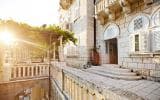48 hours in . . . Dubrovnik, an insider guide to the magnificent walled city on the Adriatic

Medieval and Baroque splendour on the Adriatic
Dubrovnik is one of the world’s most magnificent walled cities, overlooking the calm blue Adriatic. Once the capital of the mighty sea-faring Republic of Ragusa (1358-1808), it's now Croatia’s most upmarket destination. Historically, this diminutive republic was sophisticated, refined and cultured. Today, the pedestrian-only Old Town – packed with aristocratic palazzi and elegant Baroque churches, contained within sturdy medieval fortifications – draws hundreds of thousands of visitors annually, including glamorous names such as Beyoncé, Roman Abramovich, Sir Roger Moore and Naomi Campbell. Beyond the walls, attractions include wine bars, classy seafood restaurants and five-star hotels.
And then there's the glorious rock-and-pebble coast, with beaches, scuba diving and sea kayaking. Some of the best beaches lie on Lapad peninsular, two miles (three kilometres) west of town; or you might try tiny Lokrum islet, with its botanical garden (you can get taxi-boats from the old town harbour); or the pine-scented Elaphiti islands (ferry from Gruž port).
Hot right now . . .
Jane Foster, our resident expert, offers her top tips on the hottest things to do and places to eat and drink this season.
Eat
Tiny, family-run Trattoria Carmen (Damjana Jude 10, Dubrovnik Old Town) has won the hearts of locals and visitors alike, with just a handful of tables in the narrow alley leading to the Aquarium. Come here for Italian dishes based on fresh Dalmatian ingredients, such as octopus fritters, pumpkin risotto, and marinated red mullet with rocket and fennel.
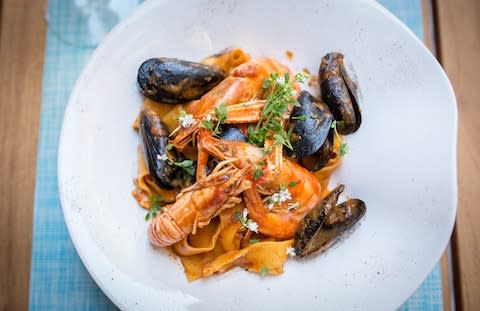
• The best restaurants in Dubrovnik
Do
To learn more about life in Tito's socialist Yugoslavia, visit the Red History Museum (Svetog Križa 3, Gruž), which opened in April 2019. Housed in a 1950's factory, opposite the ferry port, this interactive exhibition includes the interior of a typical home, complete with Yugoslav furniture and everyday items. Informative, amusing and educational.
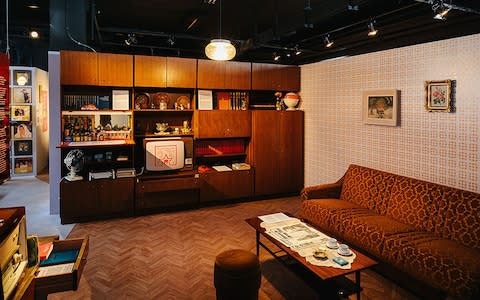
The War Photo Ltd gallery (Antuninska 6) aims to 'expose the myth of war and the intoxication of war, to let people see war as it is, raw, venal, frightening, by focusing on how war inflicts injustices on innocents and combatants alike.' The last summer exhibition is "Nam Contact", exploring Tim Page's contact sheets from the Vietnam war (17 Jul-31 Oct 2019).
• The best things to do in Dubrovnik
Drink
Just outside the Old Town, Cogito Coffee Shop Ploče Gate (Put od Bosanke 2) opened in June 2019. Baristas serves speciality coffee (flat whites and cortados are favourites), smoothies, ice teas, vegan ice creams and delicious homemade croissants, and the interior showcases Croatian designer décor from the nearby KAWA concept store.
• The best nightlife in Dubrovnik

• The best things to do in Dubrovnik
48 hours in . . . Dubrovnik
Day one
MORNING
Any first-time visit to Dubrovnik should begin by walking a full circuit (just over a mile) of the magnificent 13th-century City Walls. It'll take well over an hour, and you can expect ever-changing perspectives over the terracotta rooftops of the Old Town and out to sea. To dodge the crowds, check how many cruise ships will be in Dubrovnik on any particular day on the Dubrovnik Port Authority, and then pick what looks like the quietest date.
Afterwards, stroll along the limestone-paved Stradun (aka Placa), the main pedestrian thoroughfare through the Old Town, running from Pile Gate in the west to Ploče Gate in the east. Originally a sea channel, it was filled in during the 12th century, and is now lined with souvenir shops and pricey cafés.

On Gundulićeva Poljana (Gundulić Square), take a look at the open-air market (mornings only), where stall holders sell local seasonal produce – expect cherries and strawberries in spring, or fresh figs and peaches in summer. For lunch, grab a sandwich at Buffet Škola (Antuninska ul. 1; 00 38 52 03 21 09 6; open until 10pm in summer) in a narrow alley off Stradun – they bake fresh bread and fill slabs of it with local cheese and pršut (similar to prosciutto), and also do a yummy homemade apple strudel.
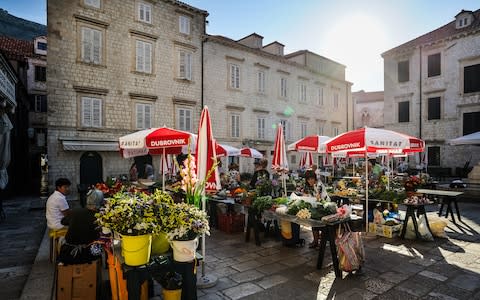
AFTERNOON
To get some idea of how local aristocrats once lived, visit the Cultural History Museum (Pred Dvorom 3; 00 385 20 321 497). Based in the 15th-century Rector's Palace, this is where the rector (city governor) would reside during his one-month term in office – on display are portraits of slightly cross-looking local nobles, as well as period furniture, costumes and clocks. It was also used as a location for Game of Thrones – if you're a fan, you'll recognise it as the atrium to the Spice King's palace in Qarth.
Nearby, the 17th-century Baroque Cathedral is also well worth a look in for its impressive Treasury, displaying ornately crafted golden reliquaries, including the skull of St Blaise (Dubrovnik's patron saint). And for liquid gold, call at Uje on the Stradun (Ul. Dinka Ranjine 1; 00 385 91 605 0111), a shop specialising in Croatian olive oil – the owners have their own olive groves on the island of Brač, and you can ask to taste their oils before making a purchase.
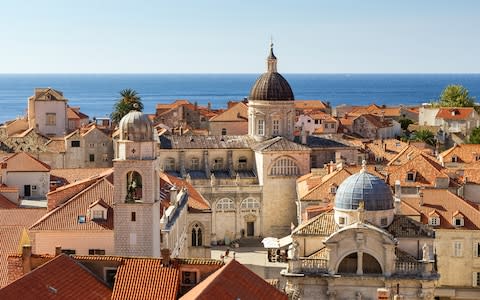
LATE
Spend the night in the Old Town, packed with candle-lit tables and sun-tanned diners on summer evenings. Start with a sunset drink at Buža(00 385 9836 1934; Crijevićeva ulica 9), accessed through a tiny doorway in the city walls. Tables are arranged on a series of levels on the rocks overlooking the sea – informal but truly magical on a balmy evening.
Then, splash out at the romantic fish restaurant Proto (Široka ul. 1; 00 385 20 323234), to feast on lobster risotto and grilled sea bream – King Edward VIII and Wallace Simpson dined here in 1936. Round off the evening with a nightcap at the Bar by Azur – order a mojito, deliciously refreshing on a hot summer night.

• The best restaurants in Dubrovnik

Day two
MORNING
Start the day with a visit to this 13th-century Fort Lovrijenac (Od Tabakarije). Lying outside the Old Town, it affords superb views of the City Walls, making it a favourite photo spot. Climb up 175 steps, to reach the upper level, complete with canons and a small chapel.
Then return to town to shop for gifts. Immediately outside Ploče Gate,Life According to Kawa (Hvarska ul. 2; 00 385 20 696 958) is a welcoming concept store, specialising in quirky Croatian designer items, including their own limited edition of Dalmatia-inspired T-shirts and mugs, tastefully packaged rakija (a potent spirit) by Mashtel from Nin, and beautifully illustrated Croatian cookery books.
Nearby, inside Ploče Gate, Dubrovačka Kuća (Svetog Dominika 2; 00 385 20 322 092) stocks paintings and ceramics by recognised Croatian artists, including raku-glazed ceramic fish by Ljiljana Barbarić, and ceramic candle-holders decorated with floral motifs by Andrea Bassi. Have lunch at Barba(Boškovićeva 5; 00 38 59 12 05 34 88), serving street food based on fresh local seafood – try the octopus burger, in a bread bun with salad and mayonnaise.
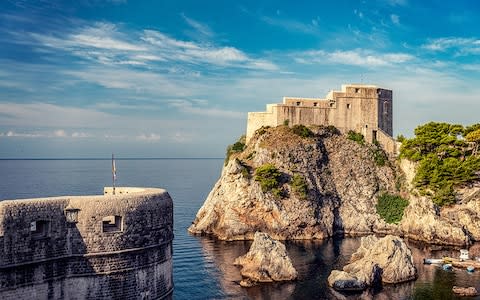
AFTERNOON
To discover more about Dubrovnik's historic naval power, visit the Maritime Museum (Ul. kneza Damjana Jude 12; 00 385 20 323 904) in St John's Fortress, overlooking the old harbour. In the 16th century, the city-republic had one of the world's largest fleets, with more than 180 ships and 4,000 sailors – exhibits here include model ships from that time, as well as navigational equipment, flags and maps.
Afterwards, grab an ice cream at nearby Gianni's(Ulica kneza Damjana Jude bb), then spend the afternoon sunbathing and swimming in the deep blue Adriatic. Banje beach (Frana Supila 10b; 00 385 99 314 64 85), immediately outside the town walls, and has a bar serving chilled drinks - take your own beach towel and lie on the pebbles, or pay extra for a sun-bed and parasol. Above the beach, there's a lounge-bar on a wooden deck, doing cocktails and snacks.
![Spend the afternoon sunbathing and swimming in the deep blue Adriatic at Banje beach - Credit: Roman Babakin (Roman Babakin (Photographer) - [None]/RomanBabakin](https://s.yimg.com/ny/api/res/1.2/51pSf23uttMgxxZtScFPpA--/YXBwaWQ9aGlnaGxhbmRlcjt3PTk2MA--/https://media.zenfs.com/en-GB/the_telegraph_818/d732c6dec2f9816cf8e965920dd5f8c2)
LATE
Start the evening in the Old Town with an amusing and informative Dalmatian wine tasting 'flight' (either three reds; or three whites) atD'Vino wine bar in the Old Town (Palmotićeva 4a; 00 385 20 321 130) – it's mellow and cosy, with several outdoor tables in the narrow side street.
For dinner, head to Azur (Pobijana ul. 10; +385 20 324 806), serving unusual but astoundingly delicious 'Cro-Asian' dishes, devised by the owner-chef, combing Dalmatian ingredients with Thai spices and fragrant herbs – try the superb swordfish fillet in black curry sauce.

• The best nightlife in Dubrovnik

Where to stay . . .
Luxury Living
Hotel Excelsior is built into a hillside above the coast, overlooking the deep blue sea and the pine-clad islet of Lokrum. Interiors are cool and minimalist, with grey walls and retro-chic furnishings. Down by the sea, a stone terrace has steps into the water. A vast wellness spa includes a big freeform pool and whirlpools, a Roman bath and Finnish sauna.
Doubles from €137 (£123). Frana Supila 12; 00 385 20 353 000
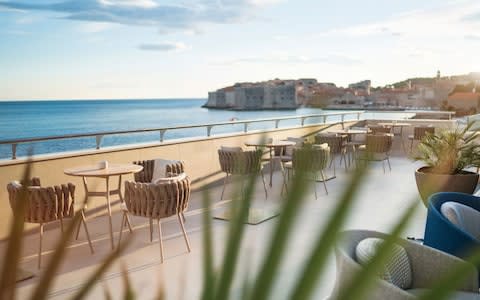
Designer Digs
The sleek, contemporary interiors of Hotel Kompas Dubrovnik will appeal to lovers of minimalist design. The minimalist all-white interiors have contemporary furnishing and fine sea views. It has a small indoor pool, an outdoor sea-view pool and a spa. The hotel also has concession for several rows of sunbeds and parasols on Lapad pebble beach.
Doubles from €99 (£86). Kardinala Stepinca 21; 00 385 20 299 000
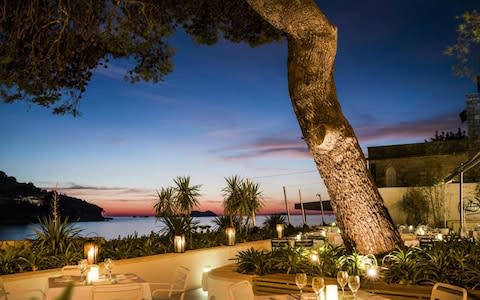
Budget Beauty
A welcoming, family-run boutique hideaway in an historic stone building. The Karmen Apartments have bohemian décor with an eclectic mix of antiques, quirky bric-a-brac, floral fabrics and modern art. A 10-minute walk up the Stradun brings you to Pile Gate, the main entrance into the Old Town.
Doubles from €55 (£49). Bandureva 1; 00 385 20 323 433
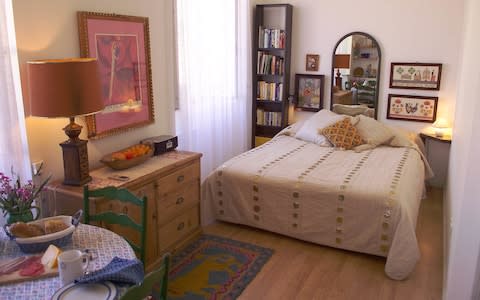
• A complete guide to the best hotels in Dubrovnik

What to bring home . . .
Natural Rose face cream (krema od ruža) is made to a secret medieval recipe at Ljekarna Male Braće (Stradun 2; 00 385 20 321411), set inside the 14th-century Franciscan Monastery.
Uje (Ul. Dinka Ranjine 1; 00 385 91 605 0111) specialises in Dalmatian olive oil. Their best-seller, Brachia virgin, comes in a stylish olive-shaped white ceramic flask.
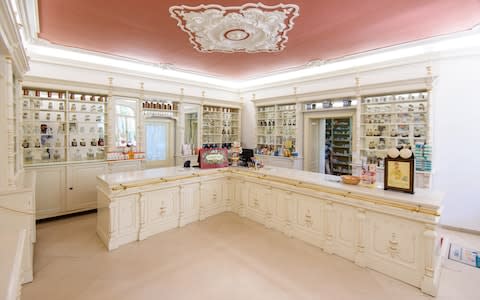

When to go . . .
For most people, the best months to come here are May to June or September to October – think sunny days with the sea warm enough to swim, and hotels, restaurants and tourist attractions open, but with less crowds – though it will still be busy.
During peak season, July to August, Dubrovnik is over-run by tourists – hotel prices rocket, restaurants and beaches are packed, and there are queues at all the main attractions, but on the plus side you get the Dubrovnik Summer Festival and a glitzy nightlife.
Low season, November to April, can be lovely, though most facilities are closed and the weather is less reliable. The down-side of tourism is that many locals have sold up and moved to the Lapad suburb, so the Old Town is semi-abandoned come winter. Some hotels and restaurants now open for Christmas and New Year, but almost everything is shut through the rest of January. And while a few places reopen for Carnival in February, the new season only really begins at Easter.
Off-season highlights
What to do
• Most of Dubrovnik's main attractions are open in winter, but with reduced hours, generally closing at 3pm. A walk around the medieval City Walls can be exceptionally impressive on a winter's day, without the crowds, if you're lucky enough to have blue sky and sunshine, but note that the bura (northeast) wind can be bitterly cold, so wrap up well.
• If it's raining, head for the Rector's Palace (housing the Cultural History Museum), the Cathedral and the Maritime Museum, each within a two-minute walk of each other, in the Old Town. Note that most good hotels have umbrellas available for guests.
Where to eat and drink
• Taj Mahal is one of the very few eateries to stay open all year in the old town, and offers a break from ubiquitous Dalmatian seafood. The kitchen turns out Bosnian specialities, with an emphasis on meat.
• Bar by Azur or D'Vino are both good options for drinking - they stay open most of the year (but sometimes shut in January).
Where to stay
• The Hotel Excelsior is a fine winter choice. The vast Wellness Spa includes a big freeform pool and whirlpools, Roman bath, Finnish sauna and theme showers. Doubles from €137 (£123).
Getting there
• Dubrovnik makes a lovely winter weekend city break, but the biggest problem is getting there. Check Croatia Airlines and British Airways, which operate sporadic direct flights from London in winter, though this might involve a change in Zagreb.
Know before you go . . .
Essential information
British Consulate: The British Honorary Consulate Dubrovnik is closed until further notice. If you need consular assistance in the area, you are advised to call the British Embassy Zagreb (Ivana Lučića 4, Zagreb; 00 385 1 600 9100; gov.uk)
Croatian Emergency services: Dial 112
Dubrovnik Tourist Office: Brsalje 5 (just outside the old town, close to Pile Gate); 00 385 20 312011. Open Mon-Sat 8am-7pm, Sun 9am-3pm. There is also a smaller tourist information office at Obala Ivana Pavla II, br. 1, Gruž (close to the ferry port); 00 385 20 417983. Open Mon-Fri 8am-3pm, Sat 8am-1pm, Sun closed.
Basics
Currency: Kuna (Kn). Croatia joined the EU on July 1, 2013 but will not adopt the Euro in the foreseeable future.
Telephone code: 00 385
Time difference: +1
Flight time: London to Dubrovnik is around two hours and 40 minutes
Author bio
Jane has lived on the Dalmatian Coast on and off since 1998. She explores the blissful Croatian islands in summer, and the cultural attractions, bars and restaurants of the mainland port cities of Split and Dubrovnik through winter.
Experience Croatia with The Telegraph
Telegraph Travel's best hotels, tours, cruises and holidays in Croatia, tried, tested and recommended by our Croatia experts.
Hotels Hotels

